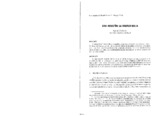Mostrar el registro sencillo del ítem
San Agustín: la finitud Bella
| dc.contributor.author | Uña Juárez, Agustín | |
| dc.date.accessioned | 2021-11-11T10:15:48Z | |
| dc.date.available | 2021-11-11T10:15:48Z | |
| dc.date.issued | 1996 | |
| dc.identifier.issn | 1133-0902 | |
| dc.identifier.issn | 2530-7878 | |
| dc.identifier.uri | http://hdl.handle.net/10396/22091 | |
| dc.description.abstract | Distensión de Ia finitud y belleza son paralelas en Agustín, su deducción y su calificación estética. Ontología de lo finito es, por ello, a Ia vez, discurso estético en tres grandes dimensiones: a) fundación y estructura de lo finito; b) sucesión temporal (temporum pulchritudo); c) devenir histórico (universi saeculi pulchritudo). (,Podríamos, sin reduccionismo alguno, interpretar su doctrina estética como «sistema de Ia finitud bella? | es_ES |
| dc.description.abstract | St. Augustine: the beautiful finiteness. Distension of the finiteness and beauty are parallel in St. Augustine, its deduction and its aesthetic qualification. Ontology of finiteness is therefore, at the same time, aesthetic thought in three dimensions: a) foundation and structure of the finetenesss; b) temporal succession (temporum pulchritudo); c) historic becoming (universi saeculi pulchritudo). Could we, with no deduction, interpret his aesthetic doctrine as «a system of the beautiful fineteness»? | es_ES |
| dc.format.mimetype | application/pdf | es_ES |
| dc.language.iso | spa | es_ES |
| dc.publisher | UCOPress | es_ES |
| dc.rights | https://creativecommons.org/licenses/by-nc-nd/4.0/ | es_ES |
| dc.source | Revista Española de Filosofía Medieval 3, 173-182 (1996) | es_ES |
| dc.subject | San Agustín | es_ES |
| dc.subject | Estética | es_ES |
| dc.subject | Filosofía medieval | es_ES |
| dc.title | San Agustín: la finitud Bella | es_ES |
| dc.type | info:eu-repo/semantics/article | es_ES |
| dc.relation.publisherversion | https://www.uco.es/ucopress/ojs/index.php/refime/index | es_ES |
| dc.rights.accessRights | info:eu-repo/semantics/openAccess | es_ES |

